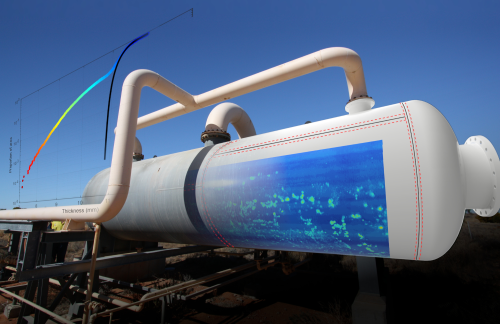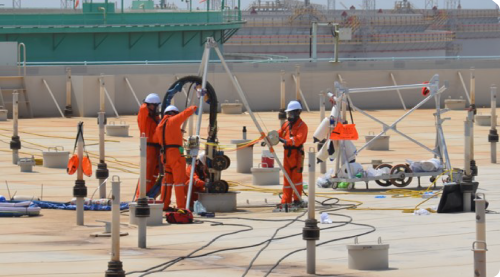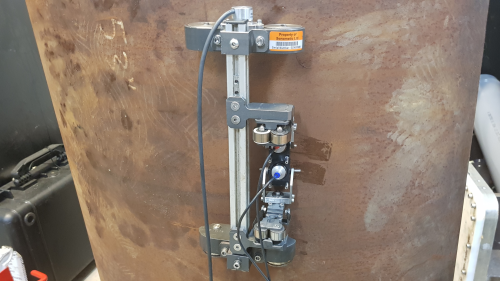Sonomatic’s expertise extends to more than 30 years, with expert teams of engineers that have earned a reputation of being the leader in highly specialised fields of inspection, supplying these specialist services to a wide variety of sectors. The company’s capabilities cover in-house instrumentation design and manufacture, in-house software development and bespoke scanner and drive control design and modification. We are also the only company with an active research and development program dedicated to the Non-Intrusive Inspection (NII) process.
Specialist Inspection
All inspection techniques, deployment tools and data analysis software are updated regularly to provide the most accurate data possible, more efficient data collection times and better data analysis methods. Over the years, we have come to understand all the frequently encountered challenges, how we can provide the most value to our clients, and how to perform every job we undertake safely.
Learn more about our specialist inspection services – contact us today!
Non-Destructive Testing (NDT)
Sonomatic has an industry-leading record and reputation for providing cutting-edge, advanced NDT inspection services to support global industries’ safety and integrity requirements. Our work in this area has focussed on safety and business-critical applications. The aim is to provide clients with accurate and reliable information to base their integrity plans and decisions.
As the world’s leading provider of advanced ultrasonic inspection services, with over 30 years of experience in this industry, we provide innovative and cutting-edge approaches to visual inspection challenges and continue to push the boundaries of what’s achievable with current and emerging technologies.
Our topside NDT inspection solutions include delivering a wide range of advanced techniques based on recognised industry standards and specially developed and validated client requirements.
In support of the inspection deployment and delivery, Sonomatic has one of the industry’s most forward-thinking and innovative research, development and engineering teams, fully supported by our highly experienced and qualified in-house technical support team, comprising NDT level 3 practitioners and PHD qualified staff.
Check out our Robotics Package for more information on our application of Non-Destructive Testing Robotics.


NDT Techniques
Non-Destructive Testing or NDT is a testing method used by the inspection industry to evaluate assets and infrastructure. It is non-destructive as it assesses materials and their flaws without causing damage or permanent alterations.
Non-Destructive Testing methods are conducted through various techniques and diversely applied across industries.
NDT analysis techniques are the methods that can be utilised for data collection during an inspection.
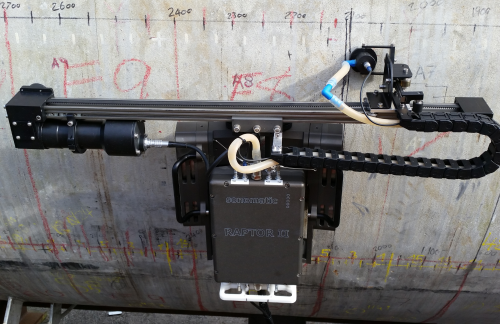
At Sonomatic, we use many NDT methods, some examples feature below. Further examples and definitions for each technique can be found in the FAQ section at the bottom of this page.
- Automated Corrosion Mapping
- Time of Flight Diffraction (TOFD)
- Automated Shear Wave Pulse Echo
- Phased Array Ultrasonic Testing (PAUT)
- Multiskip
- Long Range Ultrasonic Testing (LRUT)
- Visual Testing (VT)
- Eddy Current Testing (ET)
NDT Applications
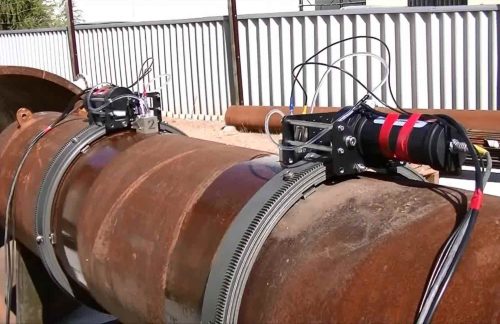
Each NDT technique can be applied to a variety of asset and infrastructure inspections.
- Non-Intrusive Inspection (NII)
- TOFD Preferential Weld Root Corrosion (WRC)
- Critical Weld Inspection
- Corrosion Growth Assessment
- Corrosion Under Pipe Supports (CUPS)
- Tank Inspection
- Offshore Process and Structural Inspection (Caissons/Risers)
- Flange Face Corrosion Inspection (FFC)
- HIC (Hydrogen Induced Cracking)
- HTHA (High Temperature Hydrogen Attack)
- SCC (Stress Corrosion Cracking)
Frequently Asked Questions
Automated corrosion mapping involves scanning the pipeline to determine the minimum remaining wall thickness for each position and can be achieved using an advanced automated ultrasonic tool. The systems deployed, produces comprehensive high-quality data that can be displayed in different views to easily identify and/or verify any areas of concern. Sonomatic Inspection Management Software (SIMS) is used to generate 2D and 3D thickness map composites to improve efficiency in data management during the collection phase, and assists in semi-autonomous data analysis and reporting.
Time of Flight Diffraction (TOFD) is a method of accurately sizing and monitoring the through-wall height of in-service flaws. It is effective for weld inspection flaw detection irrespective of the flaw type or orientation. TOFD doesn't rely on the reflectivity of the flaw but uses diffracted sound initiating from the flaw tips. TOFD's main advantage is that it has a through wall height accuracy of +/- 1 mm, and a crack growth monitoring capability of +/- 0.3 mm, on defects of all orientations.
Dynamic Response Spectroscopy (DRS) is a proprietary technology developed by Sonomatic using frequency-based ultrasonic wall thickness measurements. It is a corrosion mapping technique that applies a broad range of low ultrasonic frequencies (<1 MHz) to penetrate challenging coatings such as composite repairs, PE and Neoprene, and excites the natural frequencies of vibration of the underlying steel. The DRS probe raster scans over an area of interest and collects response signals. Advanced signal processing algorithms have been developed to extract the vibration frequencies and map the wall thickness profile.
Angle shear wave methods are widely used in NDT and in most applications the probe is manually manipulated. There are, however, significant benefits to automating the process, both in terms of probe manipulation and data collection. The benefits include the following:
- Consistent performance with minimised human factors effects
- Substantially improved probability of detection (POD)
- Improved sizing capability
- Accurate positional control
- Accurate position information for each scan
- Full recording of all data for more detailed analysis
- Reliable repeat comparisons
Automated shear wave pulse echo is used for a variety of applications, some examples are listed below:
- Inspection of welds to detect and size planar flaws.
- Inspection of corrosion-resistant alloys for stress corrosion cracking.
- Inspection of corrosion-resistant alloys for chloride pitting.
- Inspection of materials in wet H2S service for vertical cracking elements.
Multiskip is an ultrasonic rapid screening technique for corrosion and erosion detection on subsea pipelines ≥4” diameter. It uses two transducers mounted on wedges in a pitch-catch to send angled shear wave beams through the pipe wall by skipping multiple times off the ID and OD surfaces. The system is capable of high-speed, high-resolution data collection. For corrosion, loss of signal amplitude, reduction in signal arrival times, and changes to signal shape are used to provide qualitative and quantitative information.
LPT identifies cracks in materials by releasing dye into an asset and evaluating where the dye is drawn.
A phased array is a unique ultrasonic probe consisting of a group of transmitters or receivers, allowing for precise control of sound waves. When used as a transmitter, the timing of element activation creates interference that can shape and angle the beam. As a receiver, the time differences between pulse arrivals at each element provide information about the pulse source's location. Similar to how our ears work, phased arrays can pinpoint sound directions. Unlike traditional twin-crystal probes, phased arrays adjust signal phases for desired beam angles. However, their performance relies on the number, size, and spacing of elements, requiring specialised signal processing equipment. Phased arrays are widely used in radar, sonar, and medical applications but face challenges in NDT ultrasonics due to metal penetration and wave mode issues.
Ultrasonic testing utilises sound waves to detect corrosion within materials. This NDT technique utilises array transducers that pulse elements in a sequence called phasing.
Ultrasonic testing utilises sound waves to detect corrosion within materials. This type of NDT is utilised for long stretches of materials such as pipelines.
Visual non-destructive testing is a method used to examine objects without moving or applying pressure to the asset. Inspectors conduct this type of inspection through the naked eye or by utilising lights, cameras, and other tools.
This form of NDT is conducted by introducing electromagnetic currents and assessing their reactions.
Radiographic NDT employs gamma or X-radiations upon assets to identify defects.
Eddy Current Testing (ET) is used to measure the intensity of electrical currents in a magnetic field. Eddy current testing utilises AC current in a coil near or around a specimen, inducing circulating eddy currents in the material's surface. Flaws and material differences affect these currents, altering the coil's current via mutual induction. Flaw detection relies on measuring electrical changes in the coil, often focusing on voltage changes. Key factors influencing eddy currents include specimen conductivity, magnetic permeability (for ferromagnetic materials), coil-specimen distance, AC frequency, and dimensions. Calibration on test specimens is common, and eddy current testing is highly sensitive to flaws. Equipment ranges from basic meters to advanced computer-programmed systems, with applications including crack detection, component sorting, and metal quality control.
Magnetic Particle Testing NDT is conducted by inducing a magnetic field and assessing disruptions in the flow of the magnetic field.
This NDT method identifies material defects by examining acoustic emissions realised through imperfections in the material.
Leak testing identifies leaks through measurements taken with pressure gauges and listening devices.

